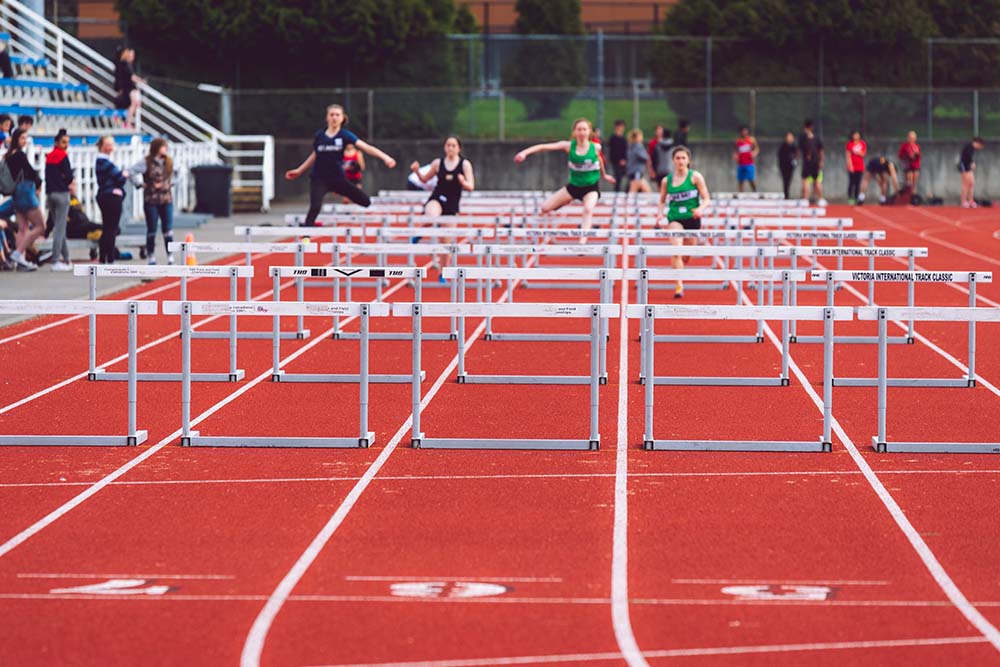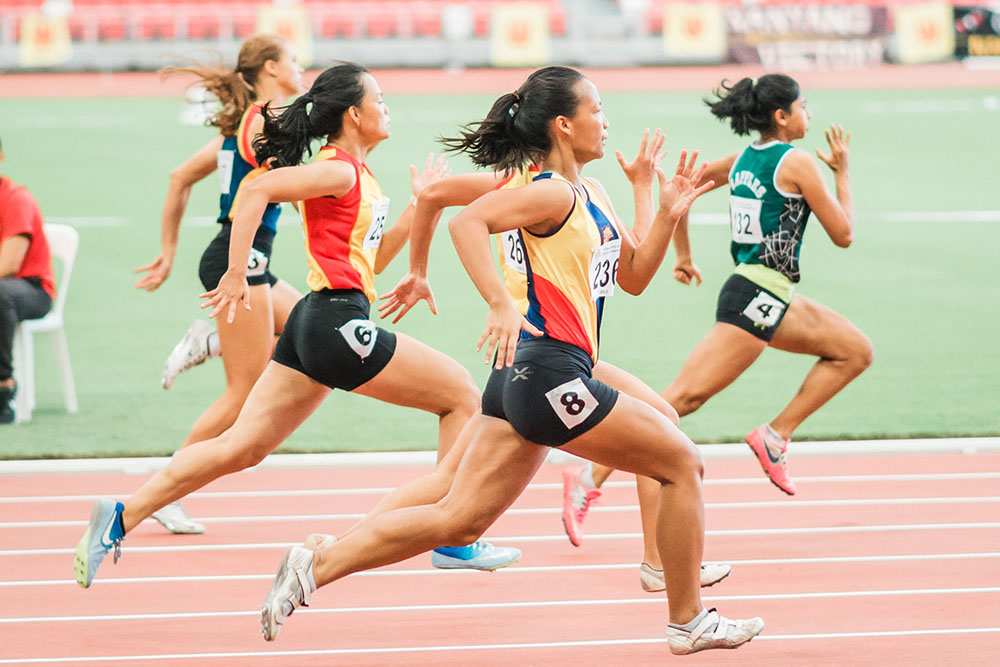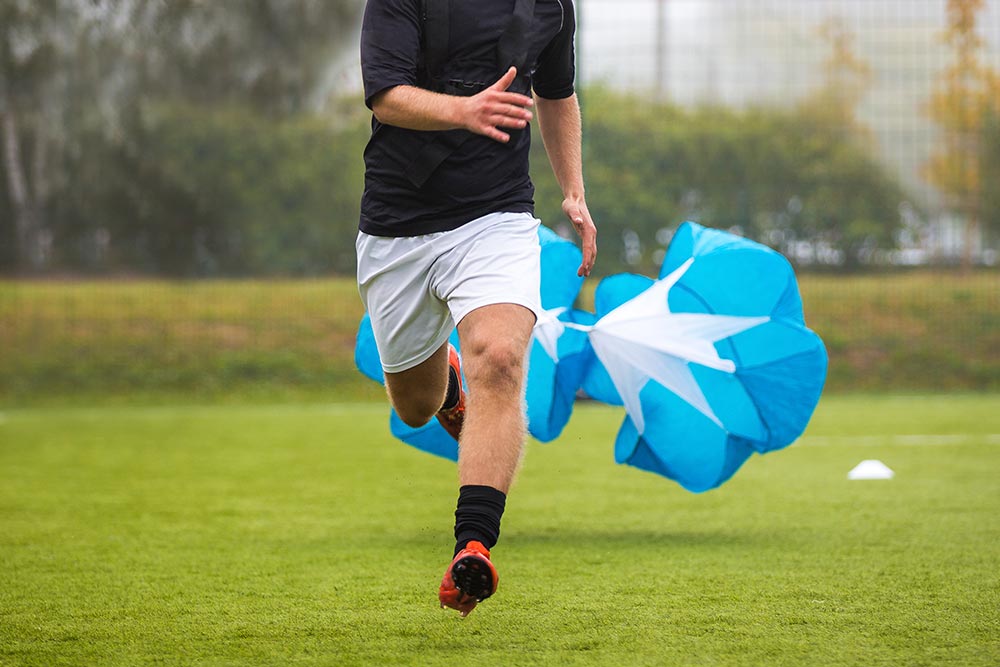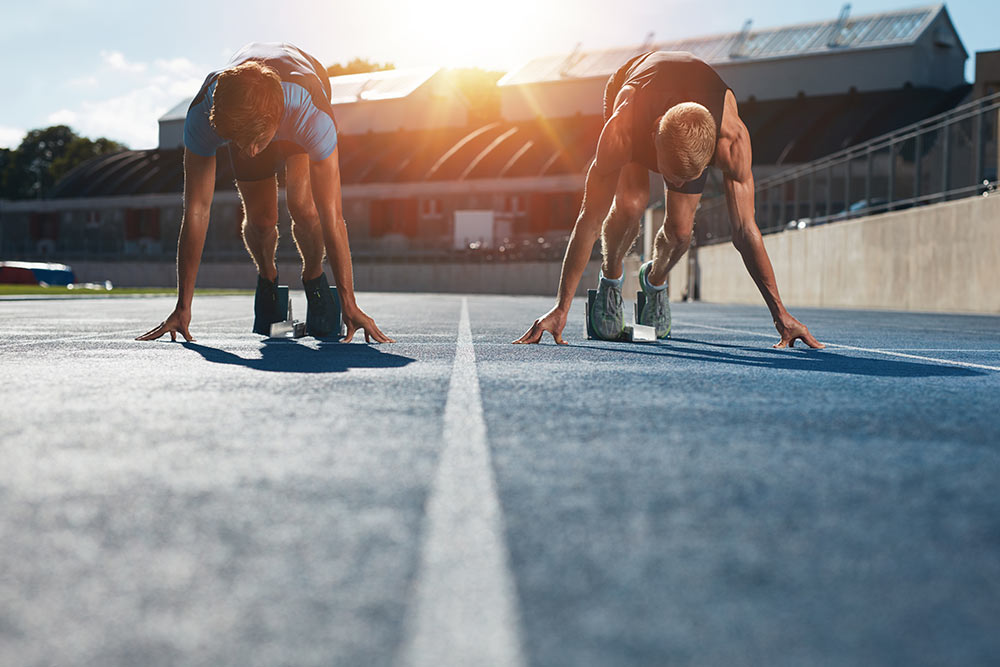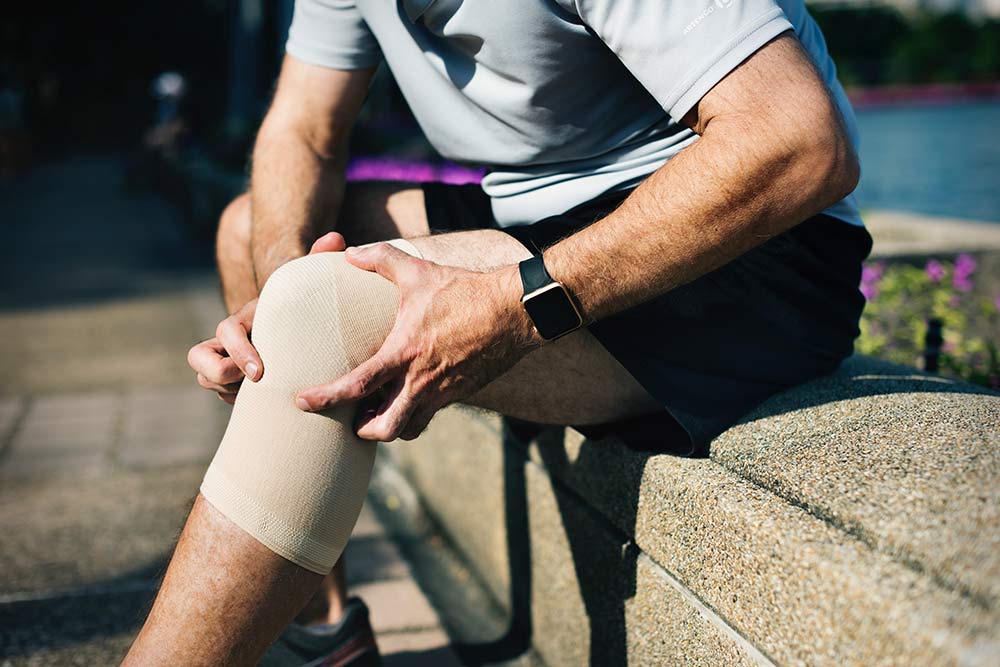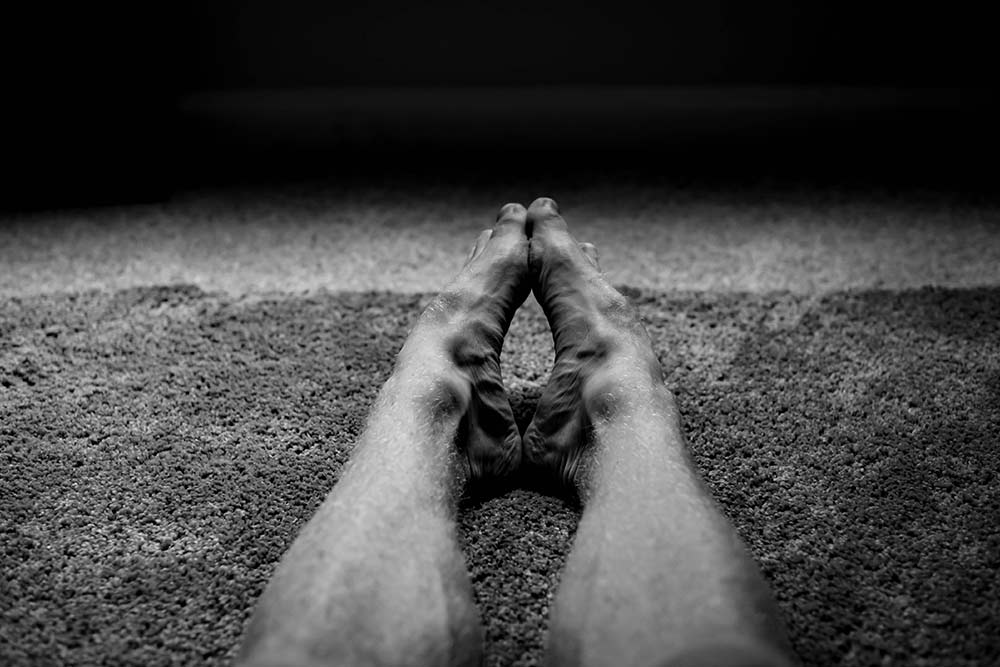Training Factors to Improve Sprint Performance & Speed
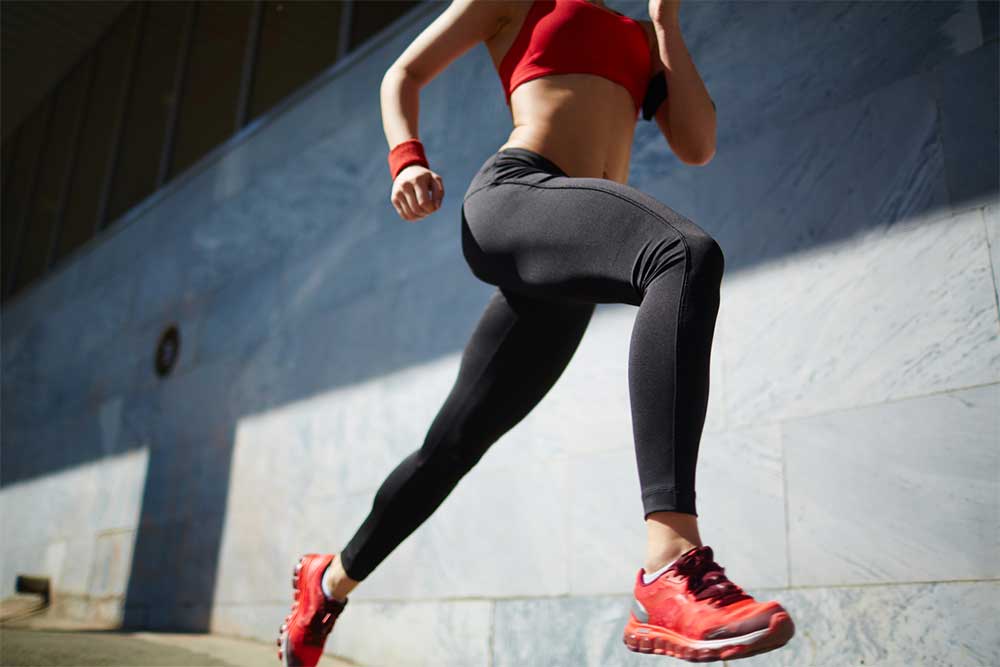
Ryan Cross, Physiotherapist
One of the most exciting events in the Summer Olympics has to be the 100 m sprint. The winner of this race is considered the fastest on earth. To get to this level of speed, proper training is required. In fact, speed is an important aspect for most sports. Coaches and trainers are always trying to get their athletes to become faster. A recent study published in the Journal for Strength and Conditioning Research has identified some factors of training that can help you improve sprint performance and speed.
The Study
The purpose of this study was to perform a brief review and investigate the current scientific literature to quantify the effect of different training methods on sprint times over various sport-specific distances (Rumpf, 2016). The investigators then pooled the data from all the appropriate studies to determine the effect of each training modality. Using the appropriate training modality can help you improve your sprinting and performance, as sprinting is a component of many sports. The study compared three groups of training modalities: programs that are specific to sprinting; programs that are not specific to sprinting; or a combination of specific and nonspecific programs. Specific spring training includes free sprinting, resisted sprinting, and assisted sprinting. Strength training, power exercises, and plyometric programs are considered nonspecific training methods.
Related Video: Upper Body Exercises For Sprinters
Specific Sprint Training
 Specific sprint training programs use sprinting as the main component of the program. Free sprinting is running without any loading on a flat surface. Resisted sprinting makes use of sleds, bands, parachutes, or running uphill to increase the load during the sprint. Using a towing device or running down a slope is considered assisted sprinting. This study found that specific sprint training had a moderate effect across all distances, with the greatest effect on distances over 31m. Free sprinting had the greatest effect on distances over 31m, resisted sprinting had the greatest effect on 0-20m distance, and assisted sprinting only showed a small effect.
Specific sprint training programs use sprinting as the main component of the program. Free sprinting is running without any loading on a flat surface. Resisted sprinting makes use of sleds, bands, parachutes, or running uphill to increase the load during the sprint. Using a towing device or running down a slope is considered assisted sprinting. This study found that specific sprint training had a moderate effect across all distances, with the greatest effect on distances over 31m. Free sprinting had the greatest effect on distances over 31m, resisted sprinting had the greatest effect on 0-20m distance, and assisted sprinting only showed a small effect.
Strength and Power-Based Training
Strength and power-based training, in addition to plyometric training, were included as nonspecific forms of sprint training in this review. Nonspecific training only had a small effect on speed. Strength training showed a small effect on sprinting speed over 31m, while the greatest effect for plyometric training was for short distances (0-10m).
Combined training methods showed a small effect across all distances. The largest training effects for this training method were observed for the 0–10m distance, although training effects seemed to diminish with distance.
Related Article: Improve Your Game With Plyometrics
Takeaway:
- Specific sprint training seems to be the most efficient method across all distances
- Resisted sprinting provided the largest effect on the 0-10m and 0-20m
- Free sprinting was best for longer distances (0-30m and 31 m +)
- Strength training had a small effect on longer distances
- Plyometric training had a small effect on short distance (0-10m)
Overall, these results show that speed and sprint performance can be improved with training. Specific sprint training had the largest effect, but to improve at all distances, a well-rounded program is necessary. The program should include specific sprint training modalities; in addition, strength training, plyometric training, and power exercises can complement the training program. The results also allow you to develop a program that can be distance specific. Whether you are trying to improve your sprint performance or become faster in your sport, a specific program can help increase your speed.
5 Drills to start improving your acceleration now:
Marches (with hands on head)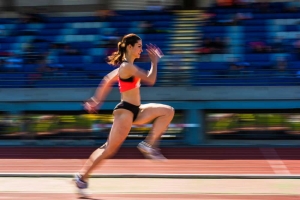
When it comes to essential acceleration exercises, marches are king.
While this particular variation (hands on head) isn’t all that taxing, it does provide an extremely effective way of improving sprint biomechanics during the acceleration phase. With this in mind, it is best used during a warmup, prior to any high-intensity efforts to maximize technical proficiency.
During this drill, both your chin and head should be held up nice and tall and facing forward, with your hands placed on your head. The key is to drive your knee, toe up, and heel up hard every single step. As you reach the top position, the heel should recover under the butt, before you proceed to step over the knee of the grounded leg. Proceed to drive the leg down into the ground with force (landing under the hip). The ball of the foot should land before the heel.
With this movement, make sure you get the leg high and keep your chest up tall. Common mistakes include slumping forward and losing head position.
Skips (with hands on head)
Think of this next variation as a progression of the marches above. Similar in premise, this great exercise further reinforces efficient acceleration movement mechanics while also enhancing force production. Start with your head and chest up tall, with your hands placed gently on your head. Commence the movement as you would a normal skip, with the grounded leg driving into the ground with force.
Your hip, knee, and ankle should undergo triple extension to push you off the ground. During this movement, actively drive your opposite leg up. Land on the same leg you first skipped off, before alternating and driving the opposite leg into the ground, repeating the process.
Arm Action
Start with your arms in sprint position (one arm forward, and one arm back). Your front arm angle should be between 60 and 90 degrees at the elbow, with your rear arm being between 90 and 120 degrees. Initiate arm swing at the shoulders, driving your front arm back and your rear arm forward. The arm coming forward should finish around cheek height, while the rear arm should pass the hip.
Wall March
Start with your hands flat against a wall in front of you. Your head, shoulders, hips, knees, and ankles should be aligned, with your body at a 45-degree angle to the ground. Actively drive your knee up towards your chest, while keeping the other foot firmly planted on the ground. Alternate legs each ‘step’.
Your thighs should finish parallel to the ground and perpendicular to your torso – this is essential to learning proper knee drive during sprinting. If your knee drive is not high enough, your steps will be short, inefficient, and lacking power.
Acceleration Positioning
During the initial start position (on your mark) the thigh of your back leg should run completely perpendicular to the ground, while your front shin should be parallel to the ground. Your arms should be straight and held slightly wider than shoulder-width, with your shoulder sitting just in front of your hands. Your head and neck should be held neutral, and your eyes focused on the ground. During this position, your fingers should be spread, forming a bridge between your thumb and fingers.
Once you hear the words ‘on your mark’ its time to begin the transition. Your hips should rise slowly, while your shoulder remains still. During this movement, you need to push your entire foot back against the block. The knee of your front leg should be angled around 90-100 degrees, with your rear leg around 120-135 degrees. Your eyes should remain looking at the ground.
And the gun goes off.
As soon as you hear this noise, drive both of your feet into the blocks at the same time, exploding out as far as possible. Your rear leg should reach triple extension at the ankle, knee, and hip, and your entire body should be angled at 45 degrees (and leaning forward). Aggressively drive your knees up and pump your arms. Keep your eyes focused about 5 meters in front of you.
Putting it Together
Now, the first four exercises on this list can be performed sequentially as part of a warm-up prior to a sprint session. As they each build upon one another, they provide the perfect way to enhance sprint technique and performance prior to moving into some actual sprint training.
Related Article: Power Training For Runners
You Might Like:
The Biomechanics of Breathing During Sprinting
Sprinting is one of the most physically demanding tasks that the human body can perform. It requires an incredible amount of explosive power, tissue resilience, and motor coordination, in conjunction with a vast body of...The Biomechanics of the Sprint Start
A perfect sprint performance is dictated by several factors, including muscle strength, explosive muscle power, a high degree of neural coordination, and most importantly – optimal sprinting technique. However, while most sprinters tend to take...How Do Sports Injury Rates Change As You Age?
As you get older, exercise becomes the most beneficial thing you can do for your body. It staves off disease and illness, all whilst helping you maintain (and often improve) joint, bone, and muscle health....Does Sprint Performance Decline With Age?
Exercising regularly across your lifespan is the perfect way to maintain health and function well into your golden years – and one of the best modes of exercise on the planet is unquestionably sprinting. Sprinting...Resisted Sprinting For Speed & Acceleration Development
Hunter Bennett Over the last decade, we have seen the world of athlete development come along in leaps and bounds (both literally and figuratively). We have seen the widespread uptake of strength training, plyometrics, and...Start Positions for Sprinters
Hunter Bennett Sprinting is one of the most incredible acts of human performance on the planet. While at first glance it may seem like quite a simple task (just run as fast as you can,...References:
Rumpf, Michael C., et al. “Effect of different sprint training methods on sprint performance over various distances: A brief review.” Journal of strength and conditioning research 30.6 (2016): 1767-1785.

